

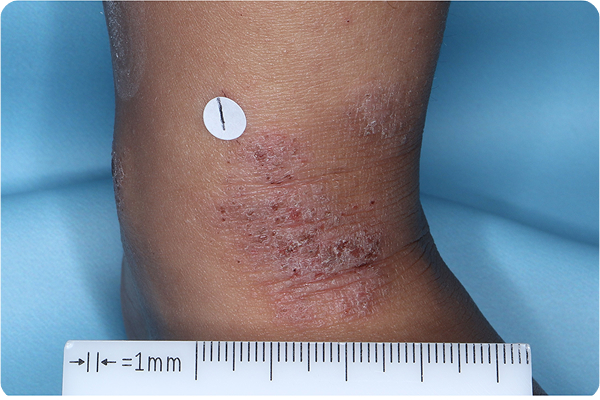
Primary Endpoint Success†7
Age: 3
Gender: Male
Fitzpatrick Skin Type: V
Patient: 1032-009

Primary Endpoint Success†7
Age: 5
Gender: Male
Fitzpatrick Skin Type: V
Patient: 1028-021
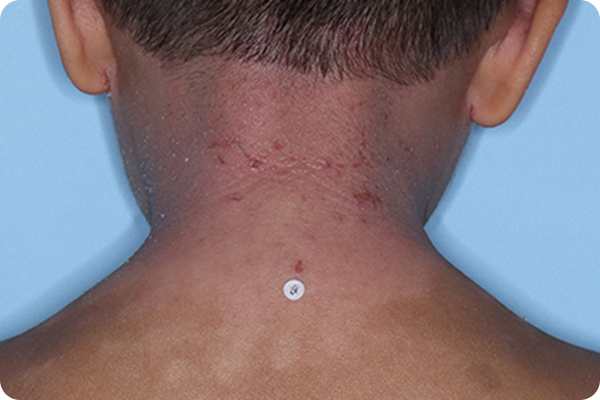
Primary Endpoint Success†7
Age: 3
Gender: Male
Fitzpatrick Skin Type: IV
Patient: 1028-009
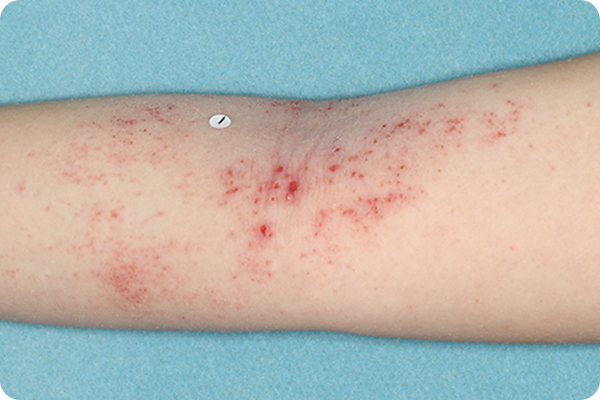
Primary Endpoint Success†7
Age: 9
Gender: Female
Fitzpatrick Skin Type: IV
Patient: 1020-002
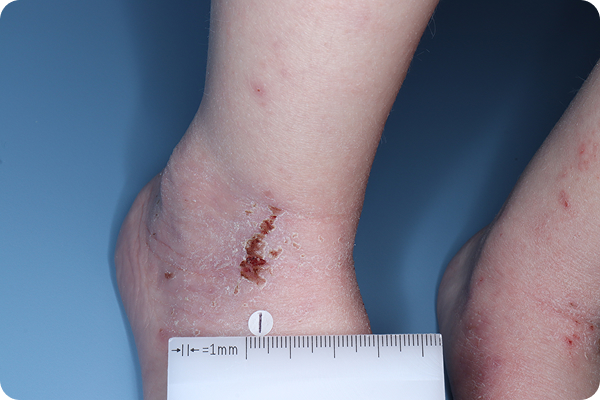
Primary Endpoint Success†7
Age: 3
Gender: Male
Fitzpatrick Skin Type: II
Patient: 1028-007
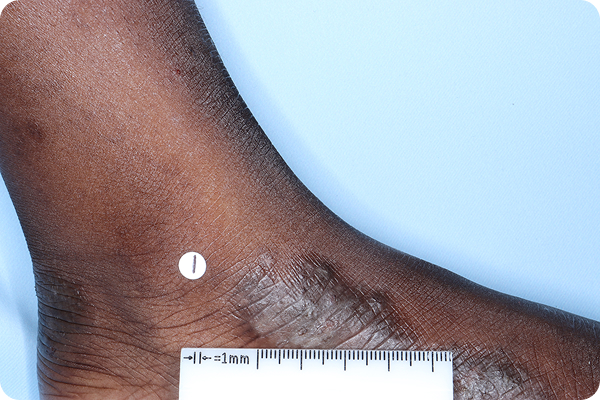
Primary Endpoint Success†7
Age: 7
Gender: Male
Fitzpatrick Skin Type: VI
Patient: 2016-013

Primary Endpoint Failure‡7†7
Age: 54
Gender: Male
Fitzpatrick Skin Type: II
Patient: 1905-027

Primary Endpoint Failure‡7†7
Age: 4
Gender: Female
Fitzpatrick Skin Type: II
Patient: 2005-007
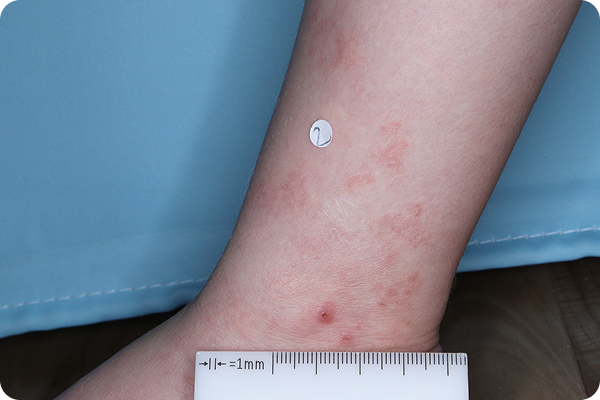
Primary Endpoint Failure‡7†7
Age: 3
Gender: Female
Fitzpatrick Skin Type: I
Patient: 1032-007
*Please note that these photographs are representative of one target lesion on individual patients treated with VTAMA cream during the pivotal clinical studies.
†Primary endpoint success defined as vIGA-AD score of 0 (clear) or 1 (almost clear) and ≥2-grade improvement from baseline at Week 8.2
‡Primary endpoint failure defined as failure to achieve vIGA-AD score of 0 or 1 (clear or almost clear) and ≥2-grade improvement from baseline at Week 8.2
Validated Investigator Global Assessment for Atopic Dermatitis (vIGA-AD): measure of AD severity with scores ranging from 0 (clear) to 4 (severe). vIGA-AD is a trademark of Eli Lilly and Co.
Eczema Area and Severity Index (EASI): measure of disease severity that incorporates body surface and lesion intensity into a composite score from 0 to 72, with higher scores indicating more severe disease.
Patient Oriented Eczema Measure (POEM): 7-item questionnaire to measure eczema severity focusing on the disease as experienced by the patient. Scores range from 0 to 28, with higher scores indicating more severe disease.
Peak Pruritus-Numeric Rating Scale (PP-NRS): patients are asked to rate their worst itch in the past 24 hours on a scale of 0 (no itch) to 10 (worst itch imaginable).
*Please note that these photographs are representative of one target lesion on individual patients treated with VTAMA cream during the pivotal clinical studies.
†Primary endpoint success defined as vIGA-AD score of 0 (clear) or 1 (almost clear) and ≥2-grade improvement from baseline at Week 8.2
†Primary endpoint failure defined as failure to achieve vIGA-AD score of 0 or 1 (clear or almost clear) and ≥2-grade improvement from baseline at Week 8.2
Indications: VTAMA® (tapinarof) cream, 1% is an aryl hydrocarbon receptor agonist indicated for:
Adverse Events: In plaque psoriasis, the most common adverse reactions (incidence ≥1%) were: red raised bumps around the hair pores (folliculitis), pain or swelling in the nose and throat (nasopharyngitis), skin rash or irritation, including itching and redness, peeling, burning, or stinging (contact dermatitis), headache, itching (pruritus), and flu (influenza).
Adverse Events: In atopic dermatitis, the most common adverse reactions (incidence ≥1%) were: upper respiratory tract infection, red raised bumps around the hair pores (folliculitis), lower respiratory tract infection, headache, asthma, vomiting, ear infection, pain in extremity, and stomach-area (abdominal) pain.
You are encouraged to report negative side effects of prescription drugs to the FDA. Visit www.fda.gov/medwatch or call 1-800-FDA-1088.
Before prescribing VTAMA cream, please read the Prescribing Information
